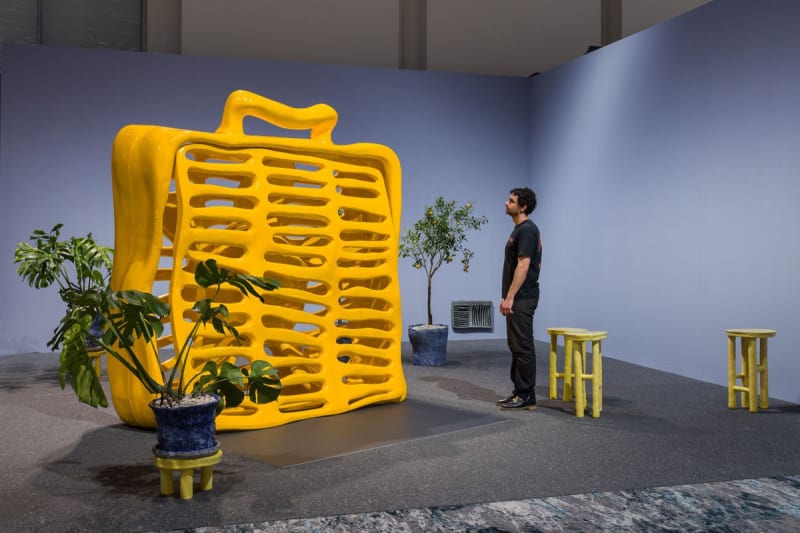Growing up in Florida as a child of Haitian descent, Woody De Othello was always intrigued by the supernatural significance attributed to seemingly mundane objects in Voudou practices. Indeed, Othello’s sculptures – fans, tables, chairs, telephones, clocks – appear imbued with an energy that is not wholly their own. They melt, they writhe, they slouch in situ, announcing an anthropomorphic presence in their materiality. Lauren Dickens writes of them: ‘A form of contemporary nkisi [an object a spirit inhabits], Othello’s vessels and misshapen objects seem to react to and hold the energies of the space they inhabit, suggesting the power of pressures endured but not seen.’
Whilst Othello’s practice includes painting and large-scale bronze sculpture, it is ceramics that the artist sees as his driving force. Able to capture both the levity and weight of everyday life, the medium is the ideal language to express the humour and animism-driven critique of Othello’s work.
